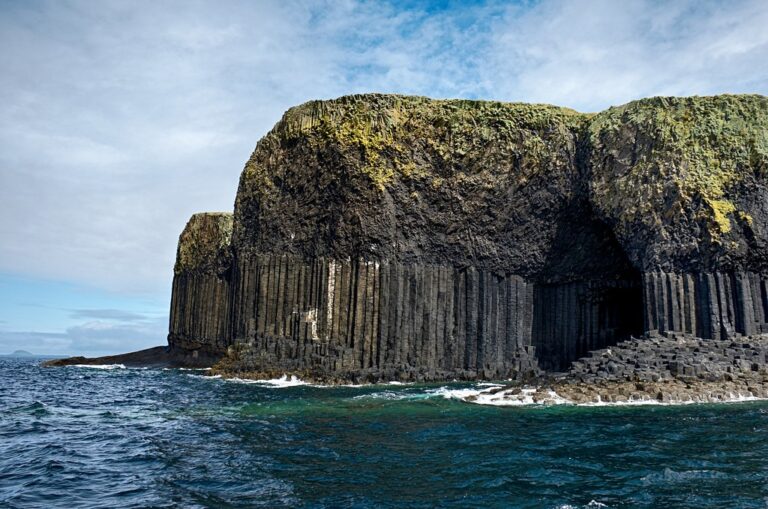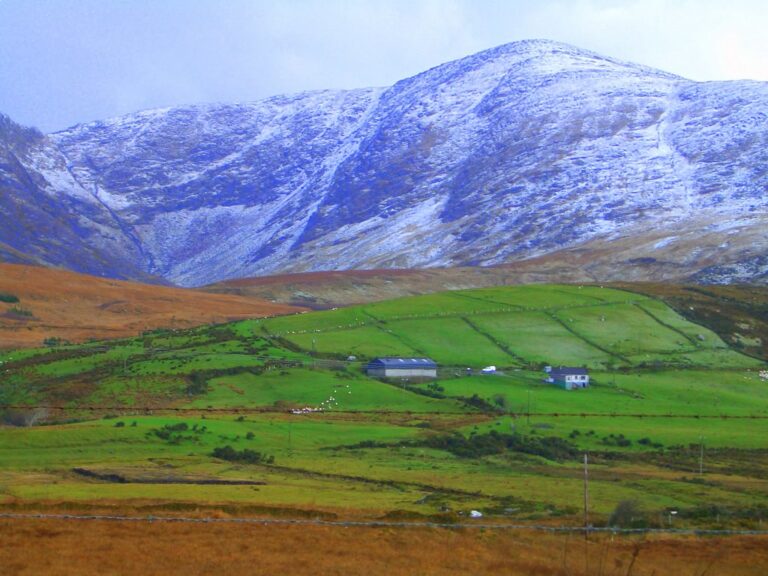What Are the Disadvantages of Tourism in New Zealand?
New Zealand's tourism boom has a dark underbelly, with overcrowding, environmental degradation, and cultural erosion emerging as unintended consequences of the country's popularity. Iconic destinations like Milford Sound and Abel Tasman National Park are struggling to cope with visitor numbers, putting pressure on infrastructure and resources. The influx of visitors is causing habitat destruction, soil erosion, and the spread of invasive species, disrupting the natural behavior of native wildlife. Additionally, the housing crisis is exacerbating, with locals being outbid by foreign investors and wealthy tourists, and unique cultural events are being replaced by generic festivals catering to tourists. As the country's natural beauty and cultural heritage face unprecedented threats, it's time to delve into the complexities of New Zealand's tourism industry.
Overcrowding in Popular Spots
Frequently, New Zealand's most iconic attractions and scenic spots are overrun with tourists, resulting in overcrowding that detracts from the unique experiences that the country has to offer. This congestion not only spoils the serenity of these natural wonders but also erodes the sense of adventure and discovery that once defined New Zealand's tourism industry. Visitors often find themselves queuing for hours, only to be surrounded by selfie-taking crowds, rather than immersing themselves in the breathtaking landscapes. As a result, the authenticity and tranquility of these iconic spots are lost, leaving tourists feeling frustrated and disillusioned.
Strain on Infrastructure and Resources
As the influx of tourists continues to surge in New Zealand, the country's infrastructure and resources are facing unprecedented pressure. The strain on local services, such as healthcare, transportation, and accommodation, is becoming increasingly evident, threatening to compromise the quality of life for both residents and visitors. In addition, the inadequate waste management systems in popular tourist destinations are struggling to cope with the sheer volume of waste generated, leading to environmental and health concerns.
Overcrowding in Popular Spots
New Zealand's most iconic destinations, such as Milford Sound and Abel Tasman National Park, are struggling to cope with the sheer volume of visitors, placing immense pressure on the country's infrastructure and resources. The influx of tourists has resulted in overcrowding, erosion of natural habitats, and strain on local amenities. This pressure is evident in various aspects of these popular spots, including:
- Insufficient parking and transportation facilities
- Overused trails and walkways
- Inadequate waste management systems
- Strain on potable water supplies
- Degradation of natural scenery due to litter and human impact
Pressure on Local Services
The surge in tourist numbers has crippled local services, including emergency responders, healthcare facilities, and waste management systems, which are now operating at maximum capacity to accommodate the influx of visitors. This increased pressure is evident in the lengthy response times of emergency services, overcrowded hospitals, and strained transportation networks. In addition, the demand for essential services such as electricity, water, and telecommunications has skyrocketed, putting a strain on the country's infrastructure. Furthermore, the sheer volume of tourists has also led to a shortage of essential resources, including accommodation, food, and fuel, further exacerbating the pressure on local services. As a result, New Zealand's infrastructure is struggling to keep pace with the growing tourist demand.
Inadequate Waste Management
How can a country renowned for its pristine landscapes and eco-friendly reputation reconcile the staggering amounts of waste generated by its booming tourism industry? The truth is, New Zealand's waste management infrastructure is struggling to keep up with the influx of visitors. Inadequate waste management is a pressing concern, putting a strain on resources and infrastructure.
- Inadequate recycling facilities and lack of education on proper waste disposal practices contribute to the problem.
- Overwhelmed landfills and inadequate waste-to-energy facilities lead to environmental degradation.
- Increased litter and pollution in natural areas compromise New Zealand's reputation as a clean and green destination.
- Insufficient funding for waste management infrastructure hinders efforts to address the issue.
- The lack of a thorough national waste management strategy exacerbates the problem, leaving local authorities to fend for themselves.
Environmental Degradation and Pollution
Rapidly escalating visitor numbers in New Zealand's fragile ecosystems have precipitated unprecedented levels of environmental degradation and pollution. The country's pristine landscapes, once untouched, are now vulnerable to the impacts of mass tourism. Litter, human waste, and pollutants from transportation are contaminating waterways, threatening biodiversity, and damaging ecosystems. The iconic fjords of Fiordland National Park, for instance, are experiencing increased pollution from boat traffic. In addition, the construction of tourist infrastructure, such as hotels and roads, is fragmenting habitats and disrupting wildlife corridors. As the tourism industry continues to boom, sustainable practices must be implemented to mitigate the environmental costs of tourism and preserve New Zealand's unique natural heritage for future generations.
Erosion of Local Culture and Identity
Mass tourism's insidious grasp on New Zealand's cultural fabric is imperiling the very essence of local identity, as authentic experiences and traditional practices are being supplanted by commercialized tourist attractions and generic souvenir shops. The influx of tourists is eroding the unique cultural heritage of New Zealand, as local customs and traditions are being lost amidst a tidal wave of commercialization.
- Traditional Māori cultural practices are being watered down for the sake of entertainment.
- Local artisans are being pushed out by mass-produced souvenirs.
- Unique cultural events are being replaced by generic festivals catering to tourists.
- The language and customs of indigenous people are being lost in the process.
- Authentic local experiences are being sacrificed for the convenience of tourists.
Increased Housing Costs and Unaffordability
As New Zealand's tourism industry continues to boom, the country's housing market has become increasingly unaffordable for its residents. The surge in housing prices and rentals has led to a deepening crisis, forcing many locals to reevaluate their living situations and, in some cases, relocate altogether. This Perfect Storm has sparked concerns about the long-term sustainability of New Zealand's communities and the potential for a local exodus.
Housing Price Surge
By injecting large amounts of money into the economy, tourism has inadvertently driven up housing prices in New Zealand, making it increasingly difficult for locals to afford a place to call home. As more tourists flock to the country, investors and developers capitalize on the demand, driving up property values and rents. This surge in housing prices has devastating consequences for Kiwis, who are being priced out of their own neighborhoods.
- Housing prices in popular tourist areas have increased by up to 50% in recent years
- Locals are being outbid by foreign investors and wealthy tourists
- The median house price in Auckland is now over $1 million
- Many New Zealanders are forced to rent, with some paying over 50% of their income on housing
- The government is under pressure to implement policies to mitigate the effects of tourism on housing affordability
Rental Crisis Deepens
New Zealand's rental market is crippled by a severe shortage of affordable properties, leaving thousands of tenants in a precarious struggle to secure a roof over their heads. The surge in short-term rentals catering to tourists has further exacerbated the issue, as landlords opt for lucrative Airbnb listings over long-term leases. This has led to a drastic reduction in available rentals, pushing prices to unaffordable heights. As a result, many Kiwis are forced to compete for a dwindling supply of rentals, driving up costs and creating a rental crisis. The situation is particularly dire for low-income families, students, and young professionals, who are being priced out of their own communities.
Local Exodus Begins
Driven by the unrelenting surge in housing costs, a growing number of Kiwis are abandoning their hometowns in search of more affordable living arrangements. As the cost of living continues to skyrocket, locals are finding it increasingly difficult to purchase or rent homes in their own communities. This mass exodus is having a profound impact on the social fabric of New Zealand, as families and friends are forced to relocate to other parts of the country.
- Housing prices have increased by over 50% in some areas, pricing out locals from the market
- The average rent in popular tourist destinations has risen by over 20% in the past year alone
- Many Kiwis are being forced to choose between paying exorbitant rents or leaving their hometowns behind
- The local exodus is leading to a shortage of skilled workers and volunteers in critical community services
- The social and cultural identity of New Zealand's communities is being eroded as a result of the housing crisis
Pressure on Fragile Ecosystems and Wildlife
Many of New Zealand's most prized natural attractions, such as Milford Sound and the Bay of Islands, are situated in fragile ecosystems that are increasingly vulnerable to the impacts of mass tourism. The influx of visitors can lead to habitat destruction, soil erosion, and the spread of invasive species, ultimately threatening the very existence of these unique environments. Additionally, tourism can disrupt the natural behavior of native wildlife, causing stress and altering their habitats. For example, the increasing number of boats in Milford Sound has been known to disturb the habitat of the endangered Fiordland penguin. In order to mitigate these negative impacts, tourists and tour operators must adopt sustainable practices to preserve New Zealand's natural wonders for future generations. Therefore, adopting eco-friendly tourism practices is crucial to ensure the long-term conservation of these areas.
Unsustainable Resource Consumption and Waste
Tourism's increasing demand for accommodations, amenities, and activities in New Zealand has led to an unsustainable consumption of natural resources, exacerbating the country's waste management challenges. The surge in visitor numbers puts pressure on the country's infrastructure, resulting in excessive energy and water usage. This, in turn, contributes to greenhouse gas emissions, pollution, and waste accumulation.
- Increased energy consumption from hotels, resorts, and tourist attractions
- Water scarcity due to high demand for showers, pools, and laundry facilities
- Generation of non-biodegradable waste from single-use plastics and packaging
- Disposal of hazardous waste from batteries, electronics, and chemicals
- Insufficient recycling infrastructure to manage the volume of waste produced



